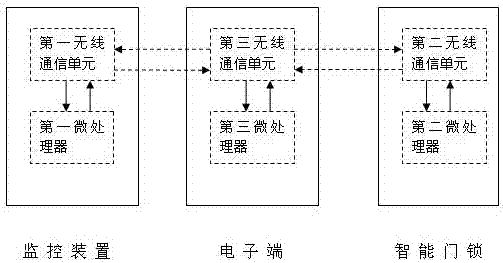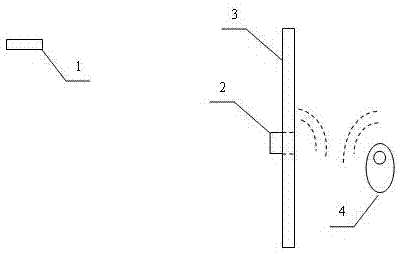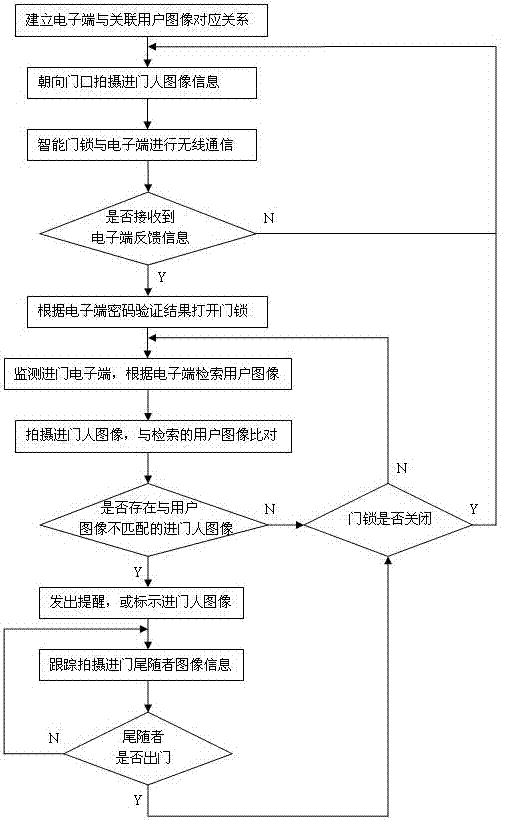Access control system for automatically identifying entry trailing personnel
An automatic identification and access control system technology, applied in the direction of instruments, time registers, individual input/output registers, etc., can solve the problems of inability to distinguish between entering and exiting, safety hazards, inconvenience, etc., and achieve reduced image comparison. range, improve the level of intelligence, and improve the effect of recognition speed
- Summary
- Abstract
- Description
- Claims
- Application Information
AI Technical Summary
Problems solved by technology
Method used
Image
Examples
Embodiment Construction
[0011] exist figure 1 The structural block diagram of an embodiment shown includes a monitoring device, a smart door lock, and a mobile electronic terminal, wherein the monitoring device includes a first microprocessor and a first wireless communication unit, and the smart door lock includes a second microprocessor, a second Two wireless communication units, the electronic terminal includes a third microprocessor and a third wireless communication unit, the smart door lock and the electronic terminal communicate through the wireless communication unit, and the smart door lock controls the opening of the door lock by verifying the unlocking information sent by the electronic terminal , The smart door lock is connected to the monitoring device through wired or wireless means, and sends unlock information to the monitoring device.
[0012] Mobile electronic terminals include smart keys, active access cards, smart phones, or electronic terminals associated with mechanical keys, wa...
PUM
 Login to View More
Login to View More Abstract
Description
Claims
Application Information
 Login to View More
Login to View More - R&D
- Intellectual Property
- Life Sciences
- Materials
- Tech Scout
- Unparalleled Data Quality
- Higher Quality Content
- 60% Fewer Hallucinations
Browse by: Latest US Patents, China's latest patents, Technical Efficacy Thesaurus, Application Domain, Technology Topic, Popular Technical Reports.
© 2025 PatSnap. All rights reserved.Legal|Privacy policy|Modern Slavery Act Transparency Statement|Sitemap|About US| Contact US: help@patsnap.com



